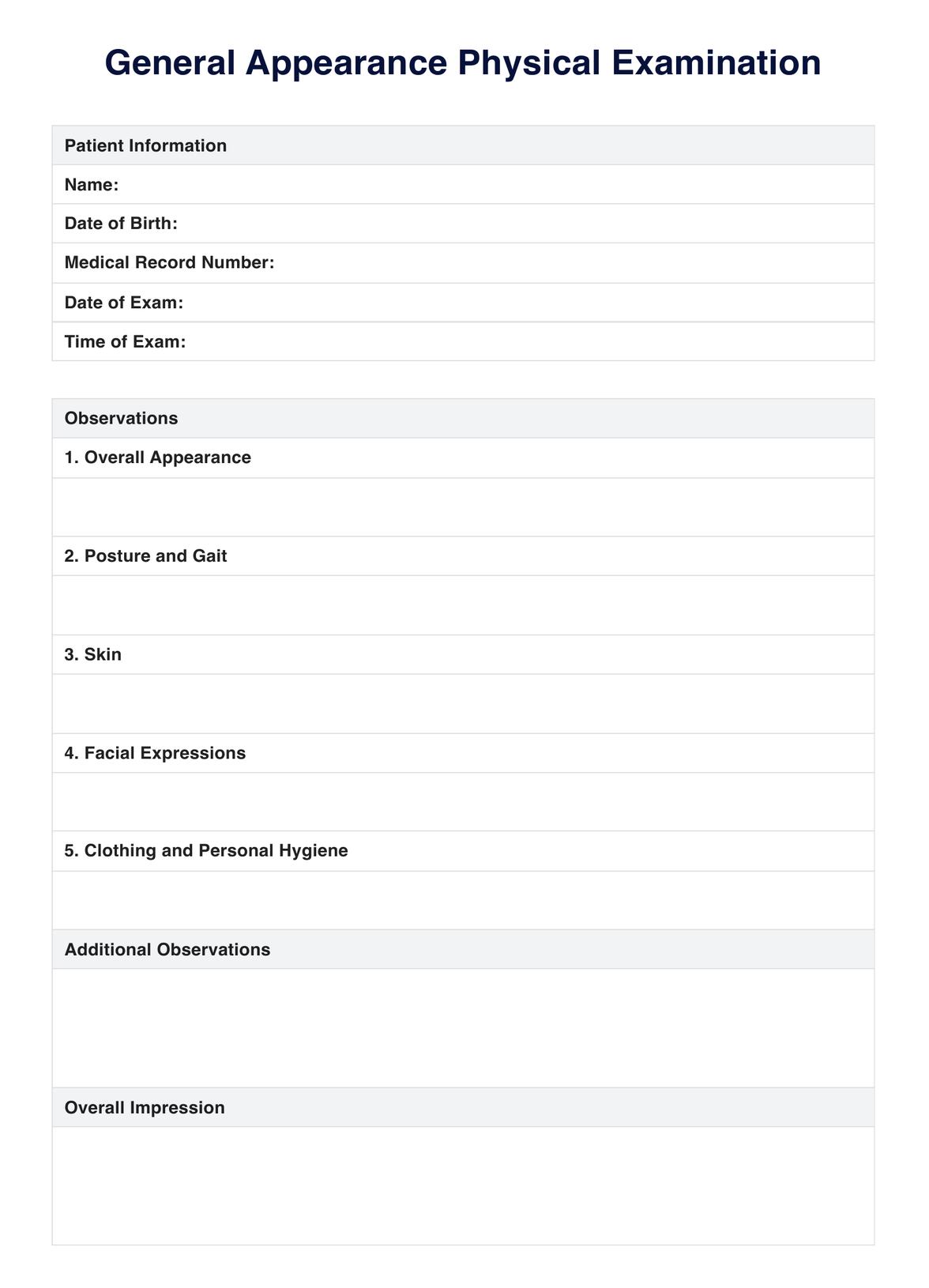The overall impression of the patient's physical state, including body habitus, posture, grooming, and signs of distress.

Master the art of assessing health at a glance with the General Appearance Physical Exam – your key to well-being evaluation.
The overall impression of the patient's physical state, including body habitus, posture, grooming, and signs of distress.
Record observations systematically, noting body build, grooming, posture, and any notable signs of distress or abnormalities.
A quick, comprehensive assessment of the patient's overall physical condition, encompassing appearance, behavior, mobility, and distress.
EHR and practice management software
*No credit card required
Free
$0/usd
Unlimited clients
Telehealth
1GB of storage
Client portal text
Automated billing and online payments